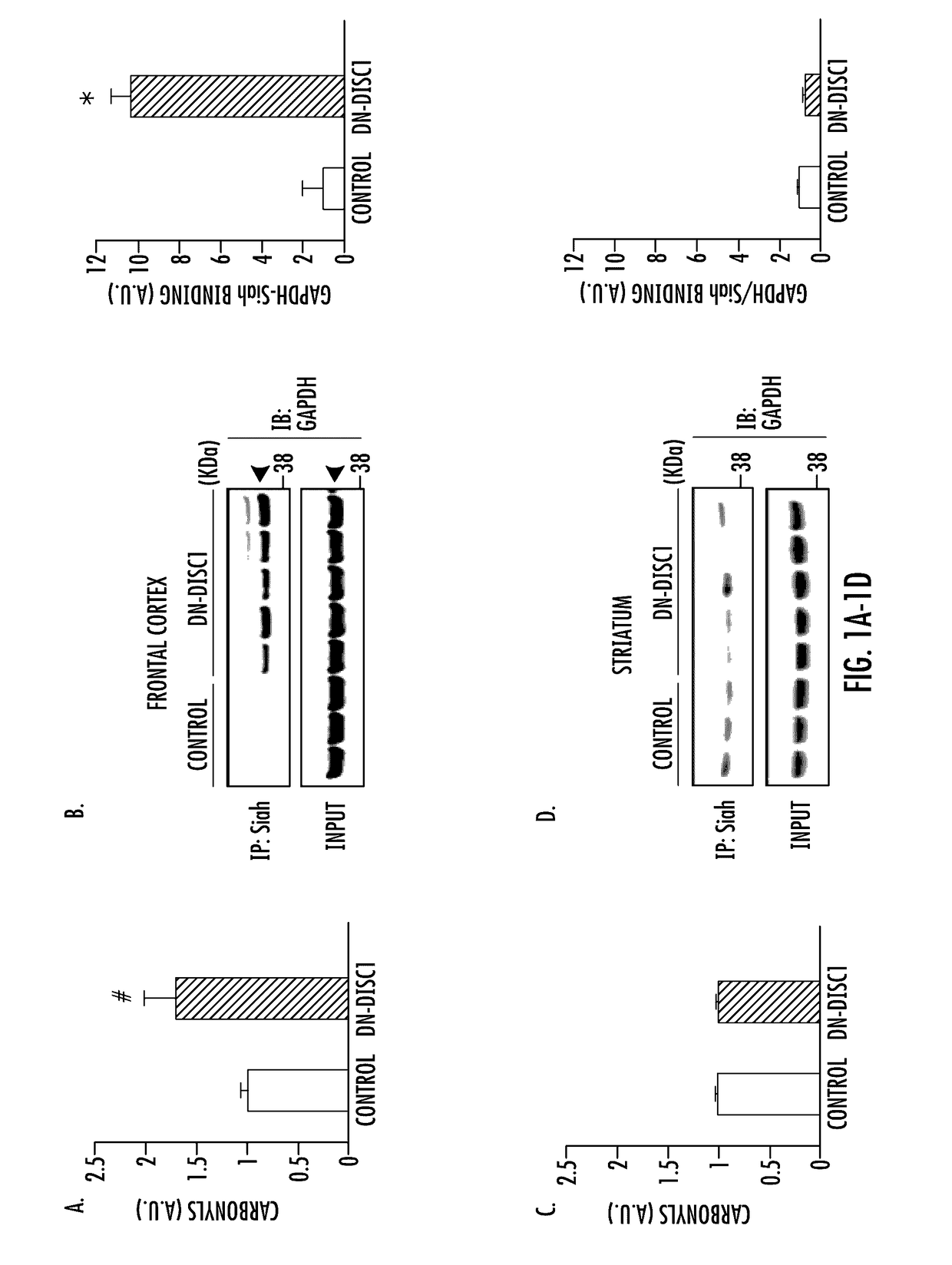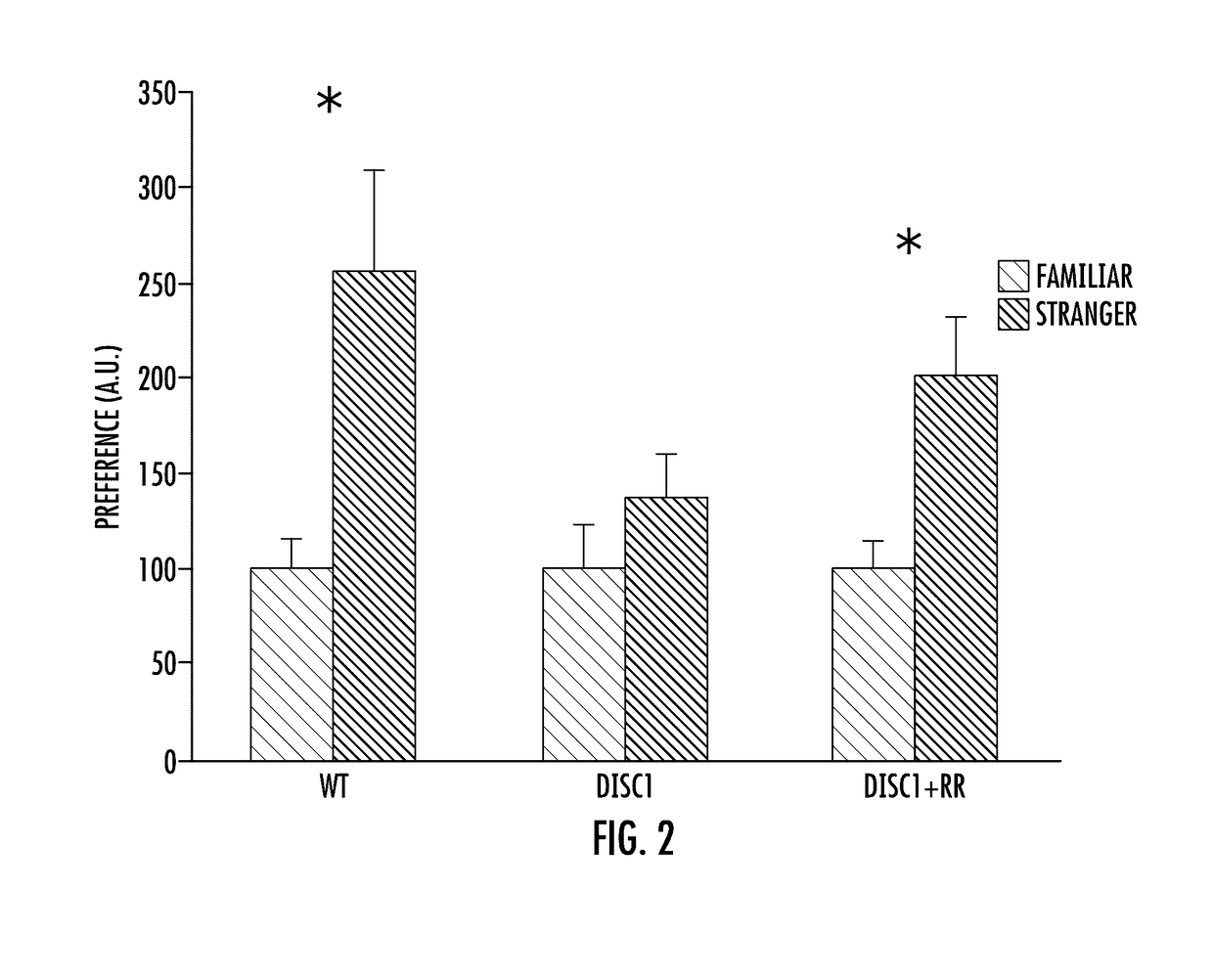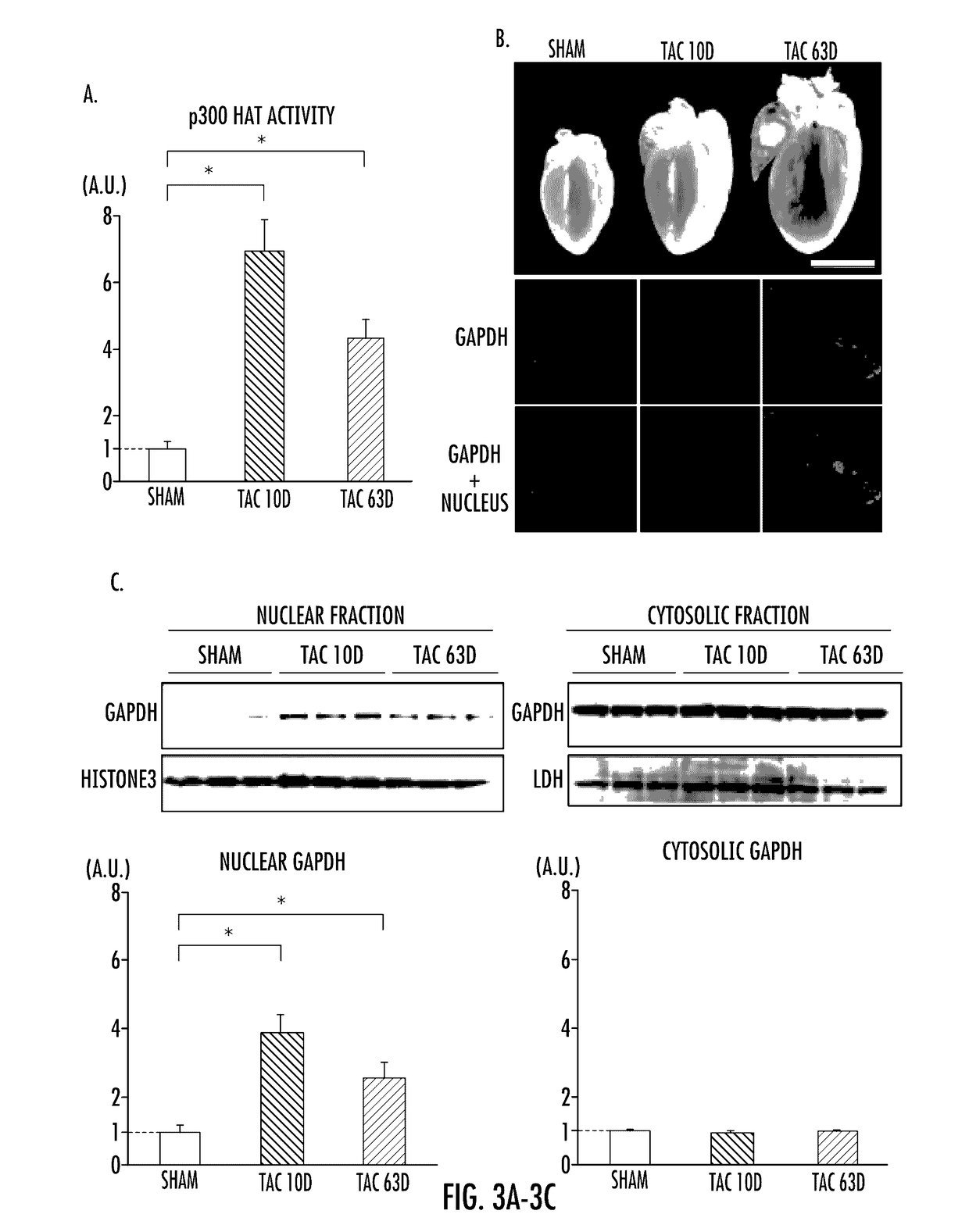Gapdh cascade inhibitor compounds and methods of use and treatment of stress induced disorders including mental illness
a technology of cascade inhibitors and compounds, applied in the field of cascade inhibitor compounds and methods of use and treatment of stress induced disorders including mental illness, can solve the problems of imposing an enormous burden on the society, further progress to failure, and disruption of such homeostasis, and achieves visible behavioral effects
- Summary
- Abstract
- Description
- Claims
- Application Information
AI Technical Summary
Benefits of technology
Problems solved by technology
Method used
Image
Examples
example 1
[0092]Oxidative stress-associated pathology in the cortex of the brain.
[0093]The previous behavioral findings suggest dysfunction to prefrontal circuitry and are consistent with decreased immunoreactivity of parvalbumin in interneurons of the medial prefrontal cortex in DN-DISC1 mice. To extend our assessment of pathology to prefrontal circuitry, we used methods to examine the presence of oxidative stress affecting prefrontal networks in DN-DISC1 mice. We first examined a gross measurement using a protein carbonyl assay in which irreversible oxidative modification of proteins was quantified. Here we observed a trend towards an increase in oxidative modification in DN-DISC1 mice compared with wild-type controls (FIG. 1A; p=0.07). To address possible downstream signaling elicited by oxidative stress, we focused on glyceraldehyde-3-phosphate dehydrogenase (GAPDH). Under exposure to excess oxidative stress GAPDH is post-translationally modified at a specific cysteine residue, C150, whic...
example 2
[0094]Preliminary results for treatment of psychiatric disorders in a mouse model using the compounds of the present invention.
[0095]The inventors have previously shown that DN-DISC1 mice display various behavioral abnormalities including impaired social recognition as demonstrated by no preference for a stranger mouse over a familiar mouse in the three chamber social novelty test (Johnson et al., supra). The inventors treated DN-DISC1 mice with RR starting at postnatal day 35 (0.25 mg / kg, i.p. / day) and continuing throughout the three-chamber social interaction test in adulthood. It was found that RR treatment ameliorated the social deficit under these conditions (FIG. 2).
example 3
[0096]To understand the pathology underlying heart hypertrophy, chronic pressure overload induced by transverse aorta constriction (TAC) is used as an established experimental animal model. Heart hypertrophy is evident at 7 to 10 days after the constriction, which leads to irreversible functional defects in 9 weeks. In the present study, the TAC model was employed and identified GAPDH as a key conveyer of the pathological stress signal to nuclear p300, resulting in disruption of critical homeostasis in vivo.
[0097]To elucidate a homeostatic control of heart hypertrophy, it was determined whether the HAT activity of p300 was altered in TAC hearts in vivo, and it was found that the activity was dramatically increased 10 days after the constriction was implemented (TAC 10D), which remained high when tested again 63 days later (FIG. 3A).
PUM
| Property | Measurement | Unit |
|---|---|---|
| surface area | aaaaa | aaaaa |
| mass | aaaaa | aaaaa |
| stress | aaaaa | aaaaa |
Abstract
Description
Claims
Application Information
 Login to View More
Login to View More - R&D
- Intellectual Property
- Life Sciences
- Materials
- Tech Scout
- Unparalleled Data Quality
- Higher Quality Content
- 60% Fewer Hallucinations
Browse by: Latest US Patents, China's latest patents, Technical Efficacy Thesaurus, Application Domain, Technology Topic, Popular Technical Reports.
© 2025 PatSnap. All rights reserved.Legal|Privacy policy|Modern Slavery Act Transparency Statement|Sitemap|About US| Contact US: help@patsnap.com



